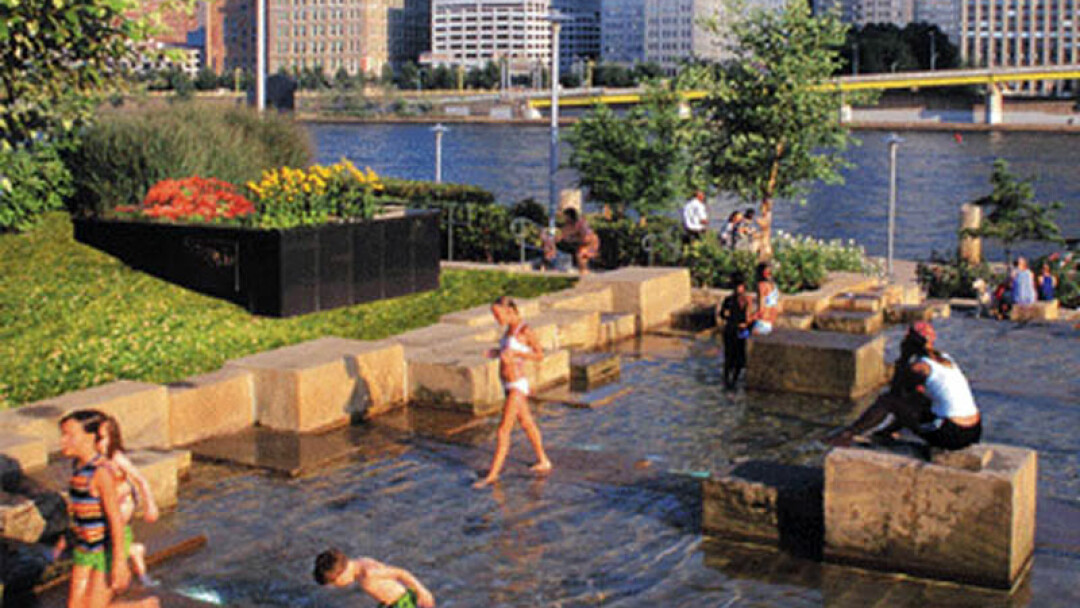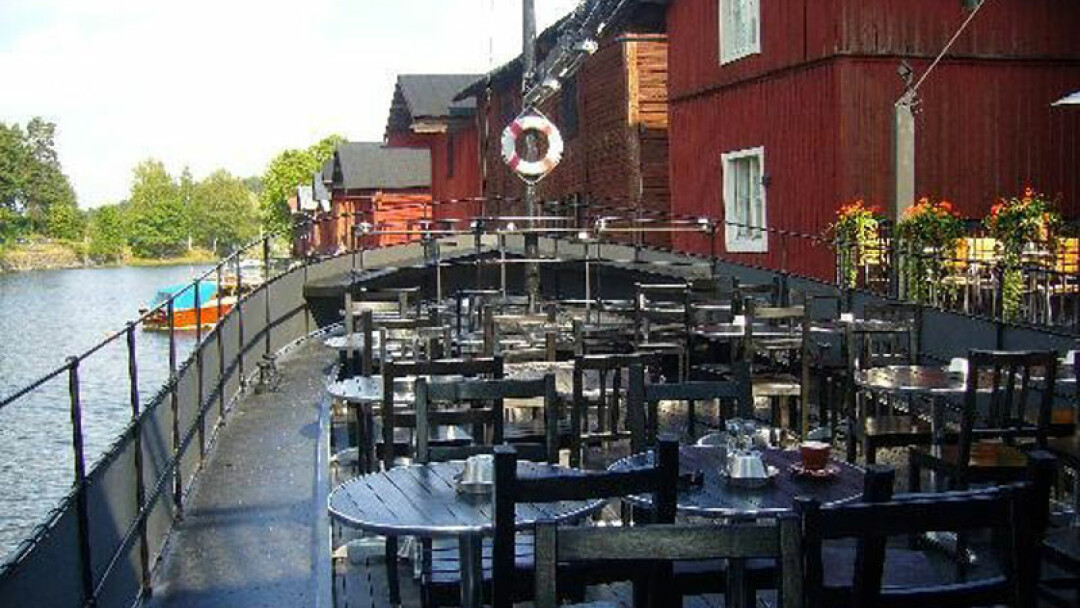Successful Riverfront 101
must-have items for a great waterfront destination by Project for Public Spaces
Buildings to Enhance
Any building on the waterfront should boost activity in the public spaces around it. Ideally, there should be a mix of uses, with seamless interaction between inside and outdoors. High-rise towers that lack any public uses on the ground floor are noticeably out of place. These usually create a wall that physically and psychologically cuts off the waterfront from surrounding neighborhoods.

A Public Feel
These are places that should be full of people, day and night. They are the sites of festivals, markets, fireworks, concerts, spontaneous celebrations, and other high-energy gatherings. A high concentration of residential development or fenced-off commercial undermines the public waterfront concept and creates pressure to prevent nighttime activity from flourishing.
Round-the-Clock Activities
Waterfronts that thrive year-round will reap substantial community and economic benefits. Rain or cold is no reason for a waterfront to sit empty. Likewise, people enjoy being by the water at night if appropriate lighting and special events make them feel welcome and safe. Without activities, many waterfronts are restricted to too much passive use and natural recreation, which lose vibrancy without other livelier options.
Flexible Design
Successful waterfronts must adapt to many changes that bring different users at different times. Programming and management are helpful in serving diverse audiences, but flexibility must also be built into the design. Instead of a permanent stage, for example, which is well used in the summer but not the winter, a retractable or temporary stage could be used. Likewise, it is important to have on-site storage for movable chairs, tables, umbrellas, and games so they can be used at a moment’s notice. If the appeal of the design is fleeting or trendy, it will eventually fade. Keep them coming back.

Well-placed Amenities
A bench or waste receptacle in just the right location makes a surprising difference in how people choose to use a place. Lighting strengthens a square’s identity and can draw attention to specific activities, pathways, or entrances. Public art is a great magnet for children of all ages to come together. Whether temporary or permanent, amenities help establish a convivial setting for social interaction.
Multi-Modal Access
You can dramatically enhance the character and experience of a waterfront when it is easily reached in ways other than driving. Access by foot and bike are a crucial element of the transportation mix, which is why many of the most beloved are crowned by pedestrian promenades and bike lanes. People feel more at ease when not overwhelmed by traffic and parking lots.
Local Identity
Making the most of local identity, history, and culture stimulates widespread interest in the waterfront and creates a unique sense of place. Frequent opportunities to appreciate local art, music, and theater helps draw a community together around the waterfront. Don’t forget to build on the existing assets in your community and find ones to connect them.
The Water Itself
The water is the greatest asset of all, and should become the centerpiece for programming and activities. This can include traditional marine uses such as a ferry terminal or fishing port; or include water-taxis, boat tours, floating pools, and restaurants or bars on anchored boats. Attention must also be given to areas for traditional recreation such as fishing, rock skipping, and swimming. Many not only attract users, but also generate interest among onlookers. Embracing the natural uses of a waterfront leads to thematic programming such as boat festivals, fish markets, bait and tackle shops, and performances on floating stages.
Iconic Buildings
Attention-grabbing buildings that reflect a human scale and do not detract from the surrounding context can be a boon to the waterfront, so long as they serve a variety of functions. In Stockholm, the busiest building is the city hall. Surrounded by a plaza, park, and courtyards, this landmark shares its slice of the waterfront with a pier where boats embark on waterfront tours. It’s more than a one-dimensional icon; it is also a good neighbor exhibiting a strong sense of place.
Good Management
Cities could adopt the model of the Business Improvement Districts that have been successful in restoring and maintaining the vitality of many downtowns and commercial districts. Forge partnerships among city agencies, property owners, waterfront businesses, and community organizations in the surrounding district so waterfront programming gives the place a unique character. Such an organization would be very helpful in sustaining a diverse variety of activities and events throughout the year and implementing waterfront programs that can be used to generate revenue that benefits the whole community.
Combination of Destinations
Even well-designed and -maintained waterfronts that provide excellent public access may not necessarily fulfill their potential as gathering places. If there are no special places that draw people, then the intrinsic vibrancy of the waterfront gets squandered. A small boat dock, a restaurant, and a playground, if combined the right way, can all build off each other and enliven a waterfront much more than any single use ever could. And make sure to connect the destinations (ideally with parks, trails, and green spaces) for a walkable experience.
Imagine Big, and Start Small
Good public spaces don’t happen overnight, and no one has all the answers about improving a place right at the outset. Placemaking is about doing more than planning. Many great plans get bogged down because they are too big, too expensive, and simply take too long to happen. Short-term actions can be a good way not only to “test the water” with new ideas, but to also give people the confidence that change is occurring – and that their ideas matter.


















